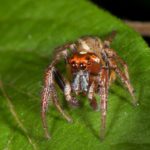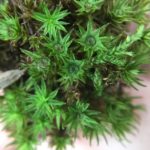When you think of biodiversity, you often think of rain forests or coral reefs. Did you know there is a wealth of species much closer to home? And an event just for documenting these species? Behold, the Bioblitz. The goal is to document as many species of living things as possible, in a park or other natural area, over a 24-hour period. Bioblitzes are important because they can help ascertain the richness and health of local biodiversity. They also may identify rare or uncommon species that might need further protection. For Preservation Parks, this information can help us determine where future trails, restored wetlands, or natural play areas will be placed within our parks. Bioblitzes also offer the chance for people to see that local parks are rich in biodiversity and are important to conserve. People also get an opportunity to walk with experts, learn, and ask questions.

 Preservation Parks held a Bioblitz at Deer Haven Park on September 7-8. Various experts, park staff, and volunteers led walks each hour focusing on different topics, including moths, birds, reptiles, and macroinvertebrates. During the event participants took and uploaded pictures of organisms they found to a smartphone app called iNaturalist. This app was then able to generate a list of all species found during the Bioblitz. So far, 241 observations have been uploaded of 146 different species. Uncommon species have been encountered at previous Bioblitzes within Preservation Parks, including the Marbled Salamander. This year was no different. We are waiting for complete species lists to come in, but we have already seen a few uncommon species including several spiders, dragonflies, and mosses. Bioblitzes are a fun way to learn and participate in documenting species richness. Preservation Parks will be blitzing a different park next year. Keep an eye on our website for further details.
Preservation Parks held a Bioblitz at Deer Haven Park on September 7-8. Various experts, park staff, and volunteers led walks each hour focusing on different topics, including moths, birds, reptiles, and macroinvertebrates. During the event participants took and uploaded pictures of organisms they found to a smartphone app called iNaturalist. This app was then able to generate a list of all species found during the Bioblitz. So far, 241 observations have been uploaded of 146 different species. Uncommon species have been encountered at previous Bioblitzes within Preservation Parks, including the Marbled Salamander. This year was no different. We are waiting for complete species lists to come in, but we have already seen a few uncommon species including several spiders, dragonflies, and mosses. Bioblitzes are a fun way to learn and participate in documenting species richness. Preservation Parks will be blitzing a different park next year. Keep an eye on our website for further details.
Dragonfly researcher MaLisa Spring provided us with a great picture of the uncommonly seen Citrine Forktail; Dr. Rich Bradley supplied the picture of the cute jumping spider, and Professor Robert Klips got us up close and personal with the microscopic world of mosses and lichens.







